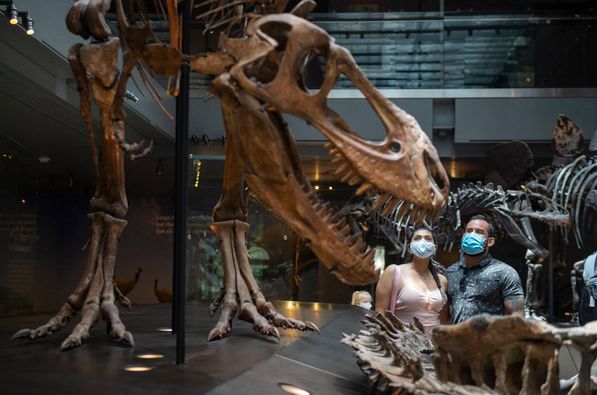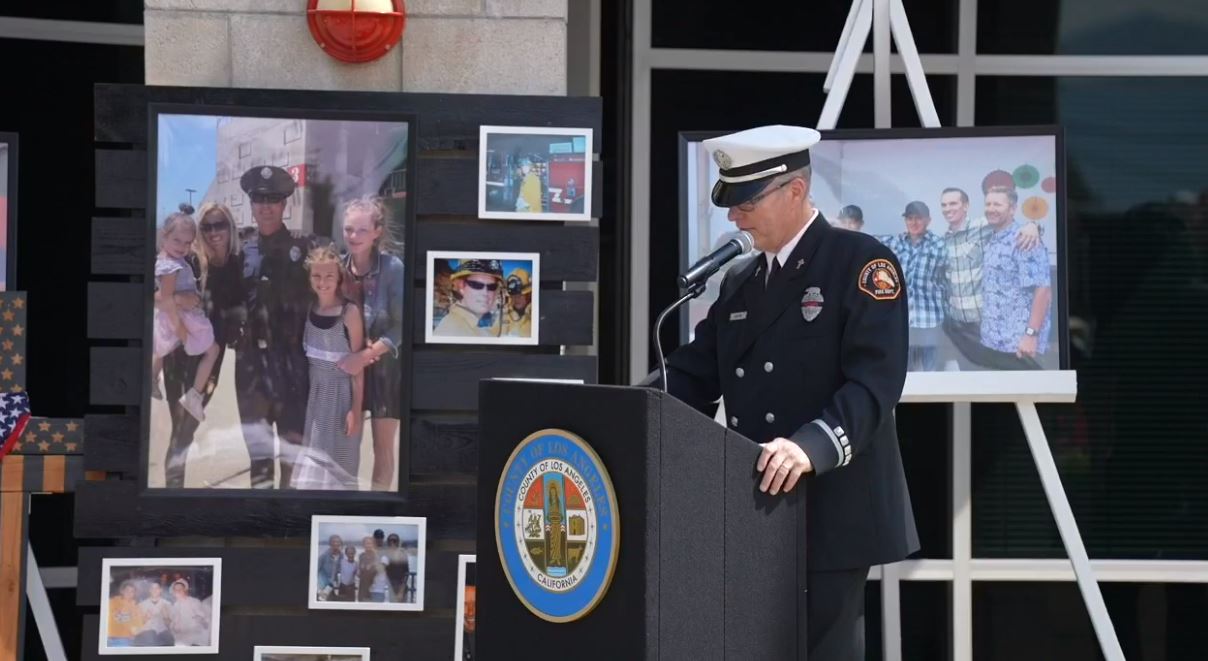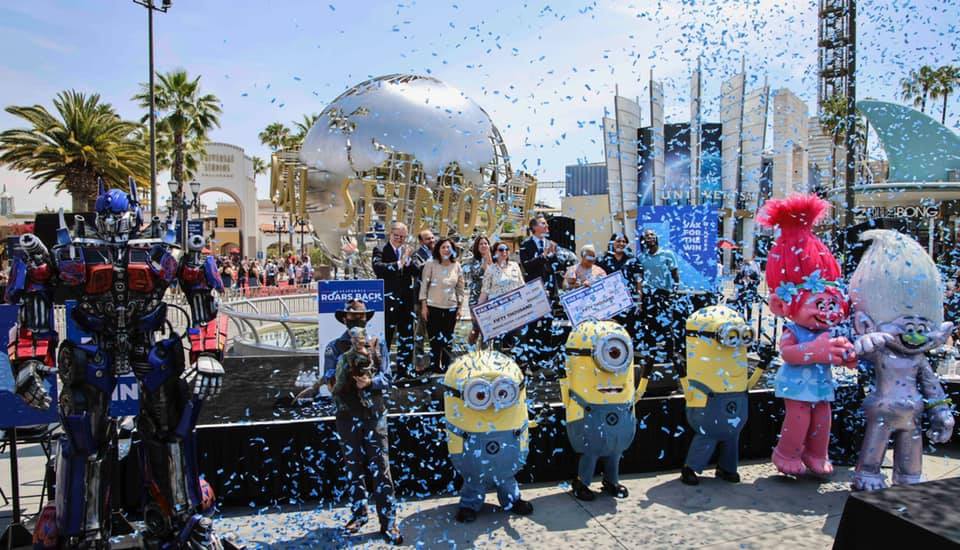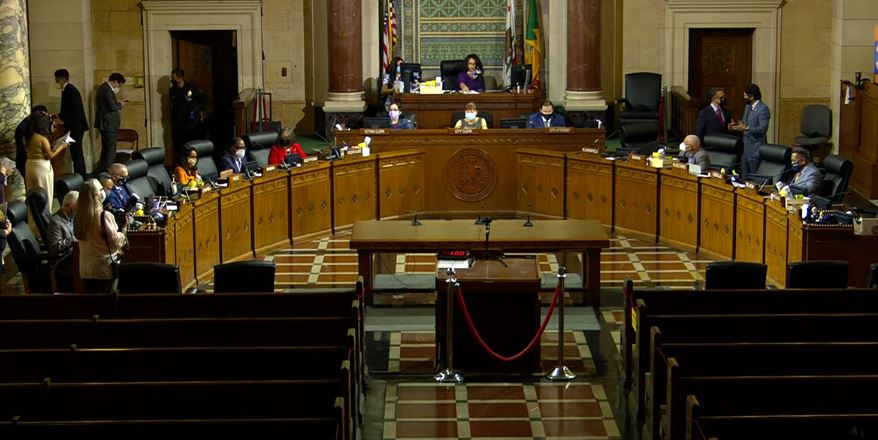The vast majority of California’s COVID-19 restrictions were lifted Tuesday, but Gov. Gavin Newsom warned the virus is still active, and mask-wearing will continue to be a reality for non-vaccinated residents, at businesses that opt to require them and for people who simply feel safer wearing them.
Effective at 12:01 a.m., the state officially scrapped its Blueprint for a Safer Economy, the four-tier, color-coded roadmap of restrictions on economic activity and public gatherings based on individual counties’ COVID case rates and testing-positivity rates.
With the blueprint gone, the state officially lifted all physical-distancing requirements and capacity restrictions at businesses and public gatherings. The result is that businesses can generally return to near-normal operations, including indoor bars and restaurants. Concerts can resume, along with full-capacity crowds at sporting events.
“It’s been a tough year for all of us, a tough 15 months for all of us — all the fear and anxiety that we’ve all had to work through,” Newsom said during a celebratory event at Universal Studios Hollywood. “I’m mindful of that stress still upon so many of you. I recognize the incredible burden that’s been placed on you over the course of the last year. But I want folks to know that the state has your back as we come back.
“… We are here because of your hard work,” he said. “We’re here because of your resilience. We’re here because of 40 million Californians that met … many different moments over the course of the last 15 months. This was the first state to initiate a stay at home order. This was a state that was guided by science, by data, by facts, by observed evidence, not ideology. As a consequence, the state of California has one of the lowest case rates in the United States of America, one of the lowest positivity rates in the United States of America, and proudly, among the highest vaccination rates in the United States of America.”
Despite most restrictions being lifted, mask-wearing still remains required in certain circumstances, particularly for people who are not vaccinated.
California’s mask-wearing guidance for the general public aligns largely with the U.S. Centers for Disease Control and Prevention recommendations. The guidance allows fully vaccinated people to stop wearing masks in most situations. But they are still be required in certain settings for all people, regardless of vaccination status:
- on public transit, including airplanes, ships, trains, buses, taxis and ride-hailing vehicles, and in transportation hubs such as airports, but terminals, train stations, seaports, marinas and subway stations;
- indoors at K-12 schools, child-care facilities and other youth settings;
- health-care settings, including long-term care facilities;
- at state and local correctional facilities and detention centers; and
- at homeless shelters, emergency shelters and cooling centers.
Masks are still required for unvaccinated people in indoor public settings and businesses such as retail stores, restaurants, theaters, movie theaters, family entertainment centers and government offices serving the public.
Business and event-venue operators can choose how to enforce those rules. According to the state, they have three options:
- businesses and venues can publicly post rules regarding mask- wearing and allow customers and visitors to “self-attest” that they are vaccinated, meaning if someone enters the business without a mask they are attesting to being vaccinated;
- they can “implement a vaccine-verification system to determine whether individuals are required to wear a mask”; or
- they can simply require all patrons to wear a mask.
Newsom on Monday recognized the issues with “self-attestation,” which essentially is an honor system, but said people “we hope will be honest about that.” He stressed that businesses can continue to mandate that all customers wear masks.
On Tuesday, the governor said the continued presence of COVID-19 variants remain a threat.
“We are mindful and sober that we need to continue to encourage people to get vaccinated,” Newsom said at the Universal Studios event. “And we need to courage people to be thoughtful and be judicious, mindful of these mutations, mindful of the variants all around the rest of the world, mindful that not everybody is doing as well as the state of California. And we have people traveling from all around not only the country but around the world coming to venues like this. We need to keep our guard up, we can’t let our guard down.”
For at least a couple more days, mask-wearing will remain mandatory for workers in indoor settings, regardless of vaccination status. On Thursday, the state’s Occupational Safety and Health Standards Board is set to consider revised workplace mask-wearing guidance, which would generally align with the state’s rules for the public at large. The rules would require businesses to verify workers’ vaccination status and make masks available to unvaccinated workers, who must wear face coverings in the workplace. Vaccinated workers would not be required to wear masks in the workplace under the proposed rules.
If the board approves the rules Thursday, Newsom said he is prepared to issue an executive order implementing them immediately. Normally, the board’s decision would have to be reviewed by state attorneys and wouldn’t take effect until the end of the month. Newsom’s executive order would close that “gap” and immediately implement the rules later this week.
While Newsom struck a celebratory tone for the reopening, the occasion also renewed criticism from Republicans of his handling of the pandemic.
“In the last 15 months under Gavin Newsom’s harshest-in-the-nation shutdowns, California’s children lost more than a year of in-person schooling, nearly 20,000 businesses permanently closed, unemployment skyrocketed, and his broken unemployment department continues ignoring more than a million Californians in need,” said Jessica Millan Patterson, chair of the state Republican Party. “While I’m thankful to finally be closer to joining the rest of the country that reopened long ago, I won’t forget the devastating experiences of too many Californians as a result of this governor’s one-man rule. Even now, as he claims our state is reopening, he’s refusing to give up his emergency powers.”







